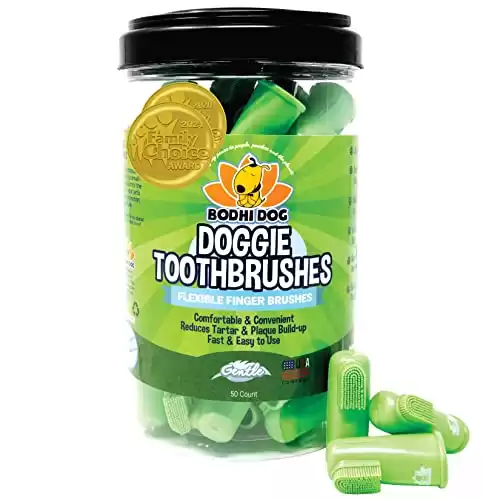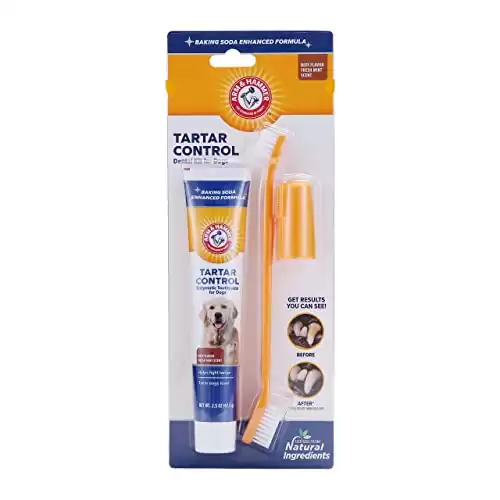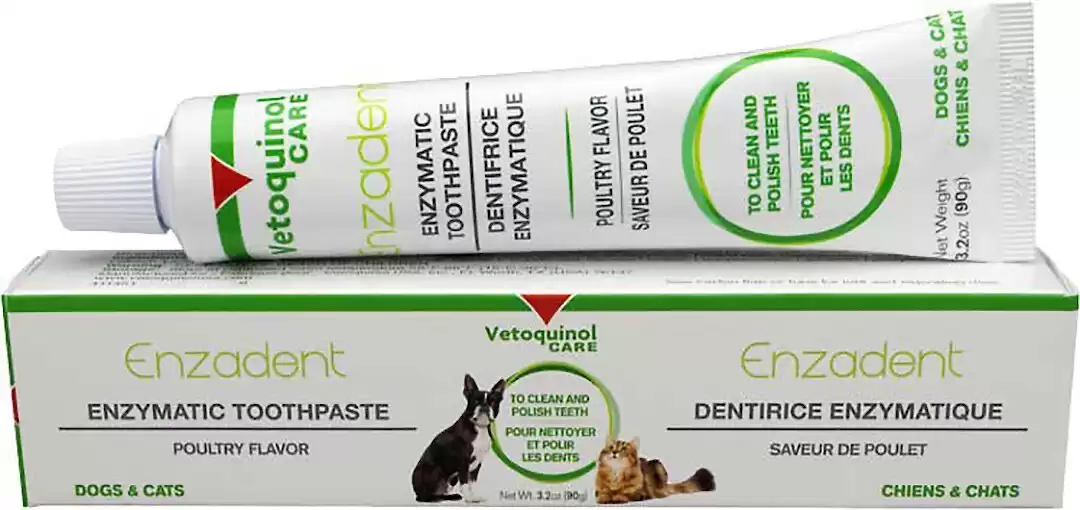Puppies are known for nipping our ankles, and playfully biting our hands with their needle-like teeth! But as they grow older, these teeth fall out and are replaced. Dogs are similar to humans in many ways, and one example is that in their lifetime, they have two sets of teeth, just like us!
Different Types of Teeth a Dog Has.
Dogs have four types of teeth like us, incisors, canines, molars, and premolars. Adult dogs have 42 teeth.
Incisors
Incisors are very small teeth, located at the front of your dog’s mouth and their purpose is for biting food, grabbing items, and helping your dog clean themselves.
Canines
Canines are the sharp, fang-like teeth that are located on either side of the incisors. These teeth have a curved design and are for tearing meat, grasping objects, and protection. They also only have one root.
Premolars
Premolars are located just behind the canines. Their role is to crush and grind tough foods such as kibble. Dogs’ premolars can have up to two roots to anchor them, compared to human molars only having one root.
Molars
Molars are the teeth at the back of a dog’s mouth. They are similar to premolars in their appearance and their functions, however, they can have up to three roots anchoring them.
- The brushes work for all life stages
- Made from flexible and pliable silicone
- Come with a convenient storage container
- For best value, buy in bulk
Puppies Deciduous Teeth
Puppies have 28 deciduous teeth (also known as baby teeth or milk teeth), that begin to protrude through their gums at 3 weeks of age and continue to grow until they are 6 weeks old. The period of time when your puppy is teething can be a nightmare. It causes pain for the puppies and they usually chew on whatever is available to relieve this pain, this includes your shoes, carpets, and your ankles! The best way to deal with this is to purchase something teething-friendly chew toys for your puppy, such as teething rings and certain toys you place in the freezer. Avoid things like animal bones, ice cubes, and any hard toys as these can damage their teething process. During teething, puppies may experience a loss of appetite and diarrhea. If these symptoms get serious, contact your vet immediately. Oh, and don’t panic if you notice blood spots on their toys or excess drooling as these are normal side effects of teething!
Puppies will have 28 milk teeth in total. The canine teeth are the first to appear 3-5 weeks. There will be two upper canines and two lower canines. The next teeth to erupt through the gums are the incisors. They grow at 4-6 weeks and there will be six on top and six on the bottom. The final teeth to appear are the premolars. They grow at 5-6 weeks, with 6 on top and size on bottom. Dogs will not grow molars in their deciduous set of teeth, only in their adult set.
Sometimes an issue may arise where a puppy’s teeth will not fall out naturally at 5 months. This is usually a genetic issue but is more common in smaller breeds. When teeth do not fall out on their own, they are known as persistent deciduous teeth. These retained teeth must be pulled out by your veterinarian or else overcrowding may occur, and cause problems when their adult teeth begin to grow. Periodontal disease can occur if there is overcrowding in your dog’s mouth. This disease causes inflammation in their mouth, and their teeth will loosen and eventually fall out.
- Formulated for both dogs and cats
- Completely alcohol-free
- Contains baking soda, peppermint, spearmint, and aloe vera extract
- Removes surface plaque
Dogs’ Adult Teeth
At about 5 months of age, your puppy’s teeth will begin to fall out, and by 8 months old all their adult teeth should be in place. When a dog’s permanent teeth begin to grow, these teeth dissolve the root of the baby teeth, resulting in them becoming loose and falling out. During this process, don’t be surprised if your puppy is agitated as it can be uncomfortable for them. Expect to find little baby teeth around your home, especially in your pup’s bed too! However, most of the time these baby teeth will be swallowed by your pup, but don’t worry, this is harmless!
Adult dogs will have 42 teeth, that’s 10 more than humans have! The incisors will appear at 2-5 weeks, with six on top and six on the bottom. These incisors will have one root the same as humans. Next to appear are the premolars and molars anywhere between the fourth and seventh months. There are eight premolars on top and eight on the bottom, whereas there are four molars on top and six on the bottom. This adds up to 42 teeth; 20 on top, and 22 on the bottom.
- Two-sided toothbrush
- Includes a finger toothbrush to get close to the gumline
- Dogs love the beef flavor
- Can be used for multiple dogs
Dog Dental Hygiene
Adult dogs may lose teeth due to trauma, but the most common reason is due; to dental health issues.
Periodontal disease (also known as gum disease) occurs when periodontitis bacteria invade your dog’s mouth. The bacteria accumulate when plaque builds up in your dog’s mouth, joins with other minerals and then tartar is formed. The immune system begins to fight off this bacteria, leading to red and inflamed gums. Symptoms of periodontal disease include red, bleeding gums, bad breath, facial swelling, blood in the water or food bowl, irritability, weight loss, and excessive drooling. If you notice any of these symptoms be sure to contact your veterinarian as periodontal disease can lead to the loss of teeth. This disease can be caused by overcrowding in a pup’s mouth, bad oral hygiene, poor nutrition, and unclean toys and bowls.
Treating periodontal disease can be quite pricey. Dogs must be put under anesthetic for all dental procedures, and your dog must have blood work done prior to this. The first step is removing any plaque and tartar from their teeth. Then their teeth are polished and this is followed by a full mouth x-ray, and finally, their teeth will be thoroughly examined for any cavities or other issues. So as I said this is a pricey process! But also very avoidable…
- Smart non-foaming formula
- Enticing poultry flavor
- Relieves any gum inflammation
- Efficient and easy to use
Cavities are another issue dogs may suffer from, however, they are extremely rare. Cavities are common in humans, and this is due to high amounts of sugar in our diet meeting the bacteria in our mouth, and forming acid which rots the tooth. Dogs do not consume sugar as we do, and they have different bacteria in the mouth. The only scenario in which a dog would have a cavity is if its owner feeds them sugary foods that are meant for humans or fruit. However, if your dog does have a cavity, it can be very painful and uncomfortable, and the tooth must be removed.
Periodontal disease and cavities can lead to life-threatening infections, but thankfully they can be prevented by keeping up with your dog’s oral hygiene. Try to brush your dog’s teeth every day, or at most every second day, with dog-specific toothpaste. Some dogs may struggle when you try to brush their teeth, so what you can do instead is purchase a dental chew or dog teeth cleaning toy, insert the toothpaste along with a treat, and leave them to chew at it themselves. However, these methods are not as effective as brushing their teeth, so it is best to get your dog used to teeth brushing when they are young. Dogs also should be scheduled for professional teeth cleaning once a year, so if any issue arises they will be spotted in time. If your dog frequently has dental issues, it is best to book a check-up appointment twice a year.
Dogs’ teeth are essential for their survival. They are used as weapons, for protection and to break down food. However, since dogs have been extremely domesticated, they rely on us to do for them what they cannot. Avoid painful scenarios and expensive vet bills by daily brushing and yearly visits to the vet!
The photo featured at the top of this post is © PolyPloiid/Shutterstock.com
Ready to discover the top 10 cutest dog breeds in the entire world?
How about the fastest dogs, the largest dogs and those that are -- quite frankly -- just the kindest dogs on the planet? Each day, AZ Animals sends out lists just like this to our thousands of email subscribers. And the best part? It's FREE. Join today by entering your email below.
Thank you for reading! Have some feedback for us? Contact the AZ Animals editorial team.










